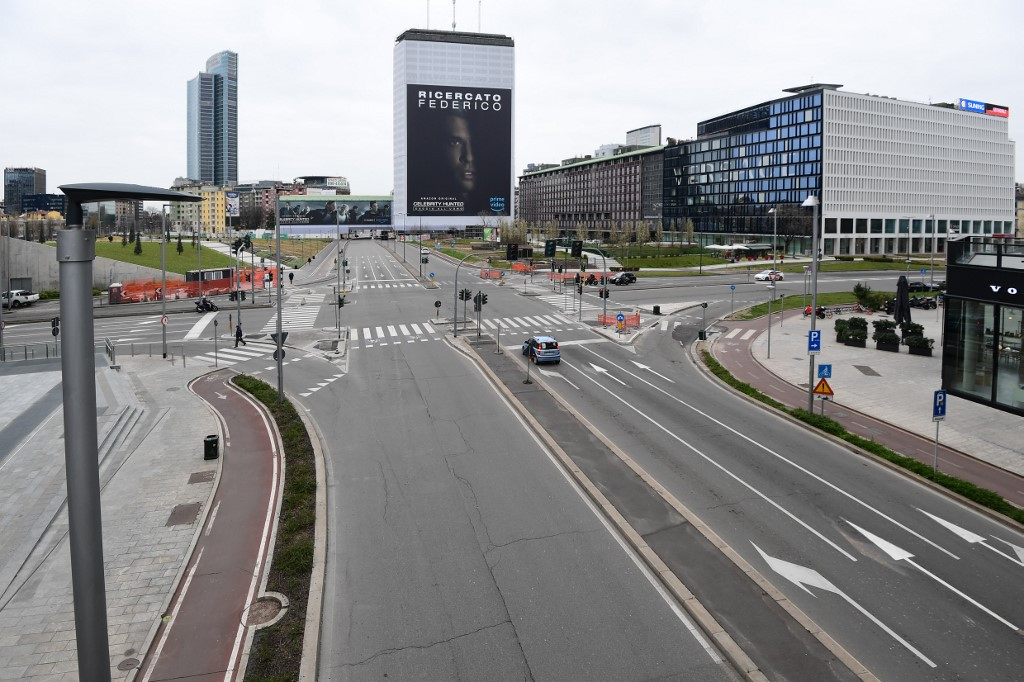Italy’s coronavirus lockdown is already lowering air pollution
“We are very confident that the reduction in emissions that we can see coincides with the lockdown in Italy causing less traffic and industrial activities.”
Change Size
 A general view shows a deserted Porta Nuova district in Milan on Thursday, as Italy shut all stores except for pharmacies and food shops in a desperate bid to halt the spread of a coronavirus that has killed more than 1,000 in the the country in just over two weeks. (AFP/Miguel MEDINA)
A general view shows a deserted Porta Nuova district in Milan on Thursday, as Italy shut all stores except for pharmacies and food shops in a desperate bid to halt the spread of a coronavirus that has killed more than 1,000 in the the country in just over two weeks. (AFP/Miguel MEDINA)
T
he impact of Italy’s nationwide quarantine that began this week can already be measured in lower air pollution levels and falling nitrogen dioxide emissions, with the decline particularly evident in the northern region that entered lockdown ahead of the rest of the country.
The drop in pollution has been detected by the Sentinel-5 Precursor satellite, and researchers concluded that it was primarily the result of efforts to contain the spread of the highly infectious coronavirus. “We are very confident that the reduction in emissions that we can see coincides with the lockdown in Italy causing less traffic and industrial activities,” said Claus Zehner, the satellite’s mission manager at the European Space Agency, in a statement.
Italy has reported the second-highest number of diagnosed cases of coronavirus, with more than 15,000 known infections and more than 1,000 deaths. Prime Minister Giuseppe Conte declared a nationwide lockdown on March 9, making Italy the first country to implement such a measure.
The Copernicus Sentinel-5 satellite tracked nitrogen dioxide emissions across Europe from January 1 to March 11, using a 10-day moving average. Nitrous oxide accounts for 6% of global greenhouse-gas emissions, according to Rhodium Group, a research firm that produces annual estimates. Most of that comes from agriculture, although fossil fuels use also contributes to the total.
The drop in emissions might be short lived. Earlier this year, satellites also detected a dramatic decline in China, where the coronavirus outbreak started. Emissions dropped in February, as parts of the country halted activity to contain the spread of the disease, but picked up again in March with workers slowly returning to their jobs.









